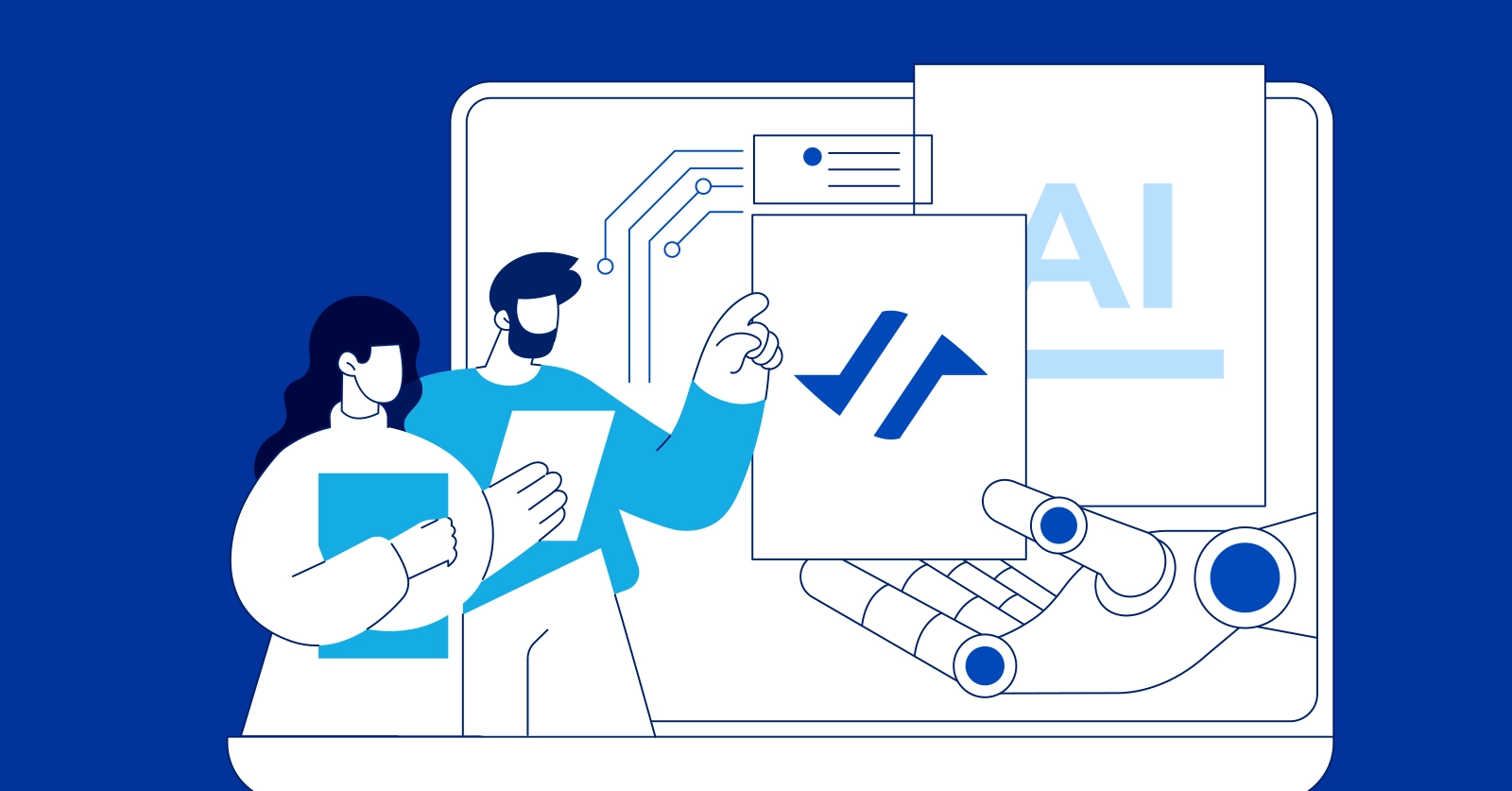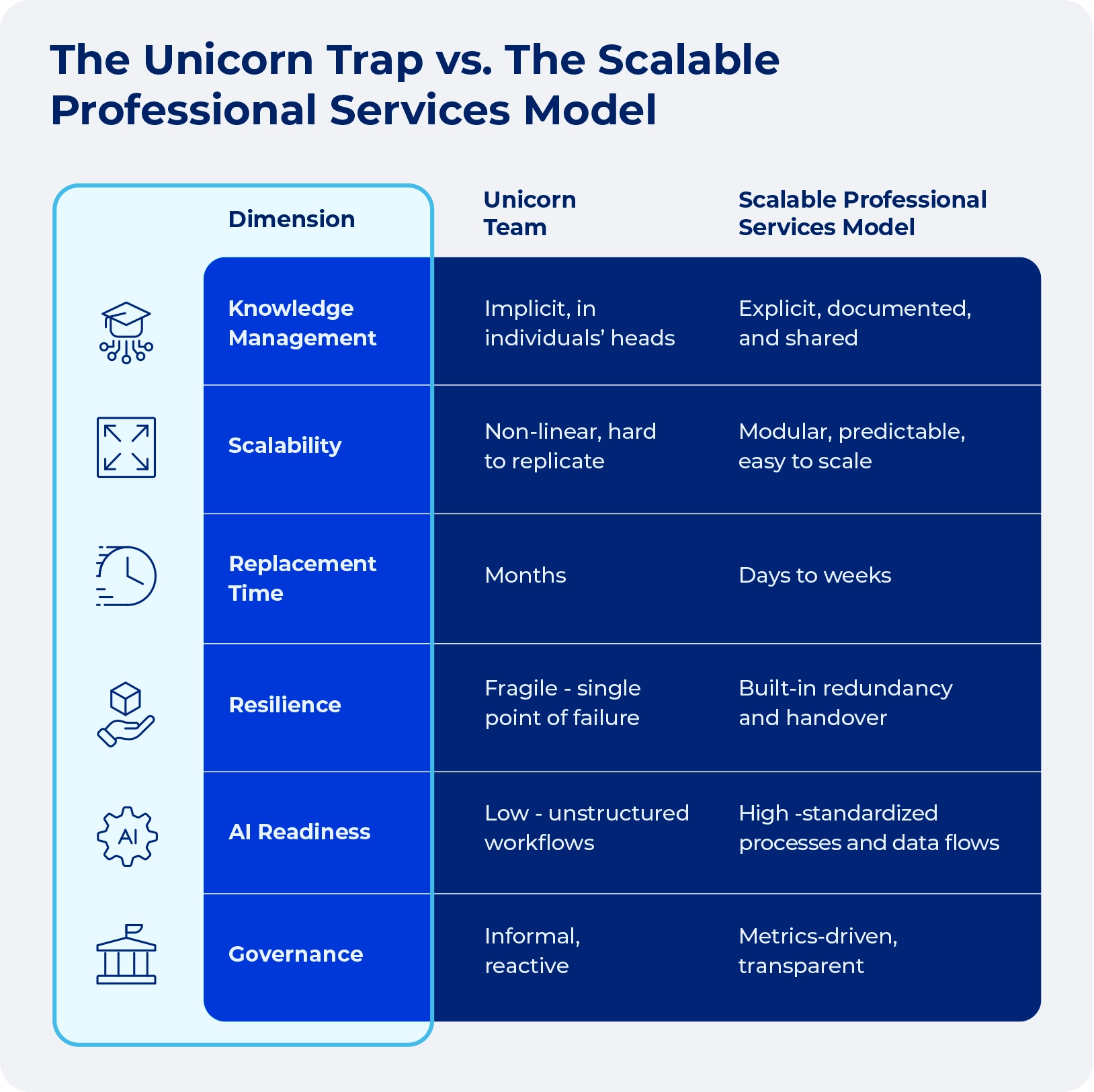 For ages, engineering leaders have been sold the dream of the “10x developer” – a full-stack polymath rockstar who can build, test, deploy, debug, and secure everything from frontend to infrastructure. But the real issue isn’t that these unicorns are rare, it’s that they’re irrelevant as a strategy for scale.
For ages, engineering leaders have been sold the dream of the “10x developer” – a full-stack polymath rockstar who can build, test, deploy, debug, and secure everything from frontend to infrastructure. But the real issue isn’t that these unicorns are rare, it’s that they’re irrelevant as a strategy for scale.
When a business relies solely on heroes, knowledge gets trapped in a few individuals. Delivery slows down when they’re overloaded or even collapses if they jump ship. Scalability suffers, and as teams grow, so does the risk of burnout and technical debt.
Scalefocus has extensive experience working with BFSI, energy, healthcare, and iGaming leaders from the US, the UK, the DACH region, Nordics, Benelux, and beyond. Each one has its unique needs, goals, and culture, but the pattern remains consistent: the companies that prevail don’t rely on unicorns. They build structured, modular, and resilient engineering systems that are independent of superhuman engineers.
Unicorn developers or scalable professional services?
In unicorn-driven teams, most operational knowledge is implicit and siloed, engineers juggle roles, and onboarding becomes slow and error-prone. By contrast, in scalable delivery models, everything is documented, modular, and resilient by design.
Here’s how the two models compare:

The difference is primarily structural, although it is also operational. In unicorn-heavy setups, every process is fragile because it’s person-dependent and lacks a shared strategy. Scalable organizations, by contrast, are architected around transparency: onboarding follows standards, governance is metrics-driven, and delivery doesn’t pause when someone is missing temporarily or otherwise. Defined systems scale because they’re designed to withstand change, not just perform under perfect conditions.
Unicorn setups often collapse under pressure when a departure or two derails the delivery stream. In a scalable model, however, knowledge cannot vanish as it remains in systems rather than individuals. Roles are clear, processes are structured, and engineers don’t need to reinvent anything from scratch when they can simply plug into a running and well-oiled machine.
From individuals to systems: a matter of architecture
Scalefocus approaches delivery not as a talent problem but as an architectural one. Our model builds capability across four distinct layers, each of which enables the next.

By designing competence into each level, Scalefocus enables fast, reliable scaling. New engineers don’t need weeks of shadowing; they walk into a defined role with clear deliverables, documentation, and peer support.
This approach transforms delivery into a repeatable system. By aligning individual depth with team clarity, organizational flow, and platform-level scalability, engineering leaders can reduce onboarding from months to days and unlock sustainable velocity. Instead of depending on all-star developers, they create a consistent engine for knowledge transfer, skill growth, and delivery quality regardless of who joins or leaves the team.
Scalefocus CodeFlow: AI‑augmented engineering
With CodeFlow, Scalefocus embeds artificial intelligence tools throughout the software delivery lifecycle, from prototyping and design to code generation, refactoring, testing, and deployment. The platform delivers measurable benefits, including sharper early-stage design, enhanced code quality and maintainability, automated testing, and substantial compliance and security controls. Because roles, responsibilities, and workflows are already defined, CodeFlow amplifies team performance without adding complexity. Rather than piling up “smart tech” and hoping it sticks, Codeflow aligns tools to structured teams that know what to do with them.
AppCare 360: operational resilience for scalable software delivery
Similarly, AppCare 360 ensures that once your product is live, the delivery standards don’t drop off. The service employs a “swarming” support model that enhances responsiveness, reduces overhead, and optimizes support costs to deliver predictable, transparent operations underpinned by clear roles and documentation. When engineering teams hand over to operations, AppCare 360 ensures continuity, so that the same modular, process-driven mindset applied in development carries over into post-release support and maintenance.
What makes teams resilient?
Velocity alone doesn’t tell you how healthy your engineering unit is. That’s why Scalefocus tracks structural resilience with metrics that reflect team stability, knowledge transfer, and adaptability. Here are several key metrics to watch:
- Knowledge Concentration Index: How much does delivery depend on one person?
- Mean Onboarding Time: How fast can new team members reach 80% productivity?
- Role Clarity Score: Can each engineer name their upstream/downstream interfaces?
- Throughput Stability: How does delivery cadence change when one person leaves?
These are the metrics that separate brittle teams from resilient ones. When these scores improve, release cycles shorten, issues are resolved quickly, and business risk goes down.
AI rewards structures, not superheroes
Artificial intelligence is at its most productive when teams are well-structured. It can only accelerate QA when test cases are clear and well-maintained and automate deployments if DevOps pipelines have defined handoffs. Furthermore, AI-driven enhancements to coding efficiency are only possible if documentation is structured and accessible. AI-augmentation can never be purposeful in chaotic delivery setups, as AI’s real value emerges when plugged into well-defined roles, workflows, and standards.
How to build an AI-ready delivery enterprise?
If you’re responsible for engineering scalability, here’s where to focus next:
- Map dependency risks. Identify team members who hold too much critical knowledge.
- Clarify swimlanes. Avoid hybrid roles and clearly define responsibilities within each domain.
- Use role-specific AI. Pair disciplines with the proper AI support, including test automation, infrastructure optimization, etc.
- Adopt resilience KPIs. Make onboarding time and throughput stability visible to leadership.
- Co-build with the right partner. Structured partners like Scalefocus bring repeatability and governance to every engagement.
Conclusion
The age of the rockstar developer is fading, as the future belongs to enterprises that rely on measurable, modular, and flexible systems. At Scalefocus, we help clients build those systems regardless of the domain: BFSI, iGaming, energy & utilities, aviation, healthcare, manufacturing, and more. If you’re done chasing unicorns and ready to scale with clarity, do not hesitate to contact us.



